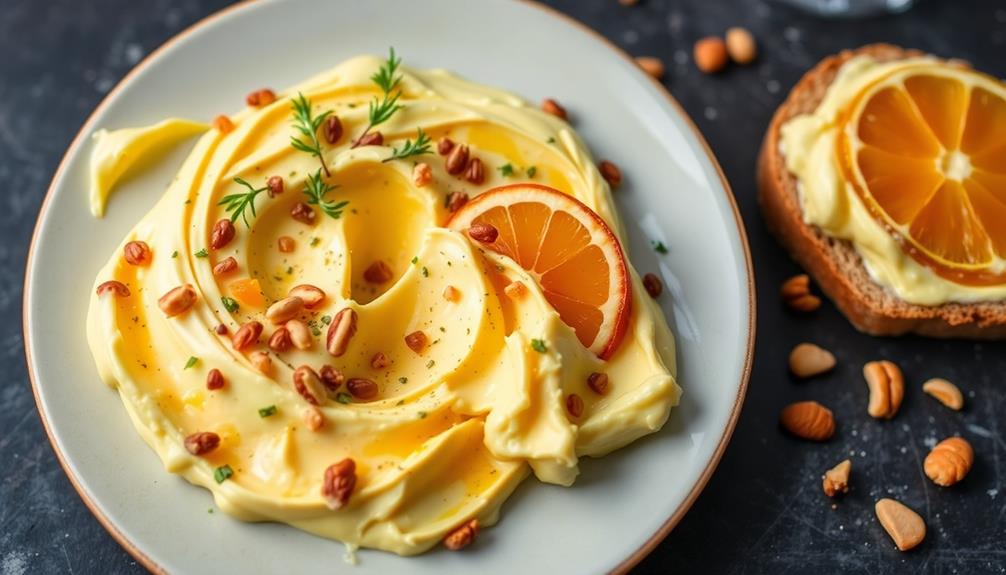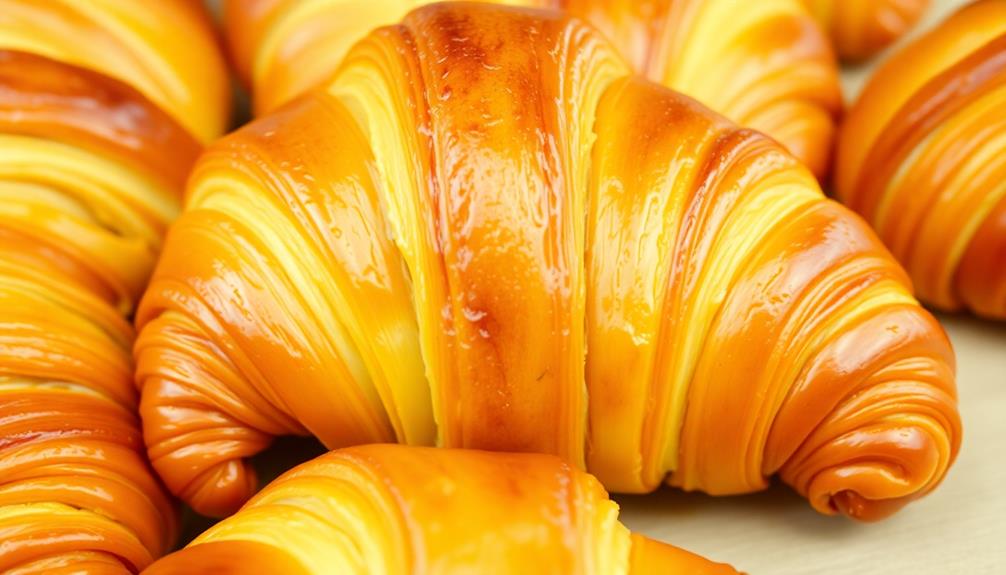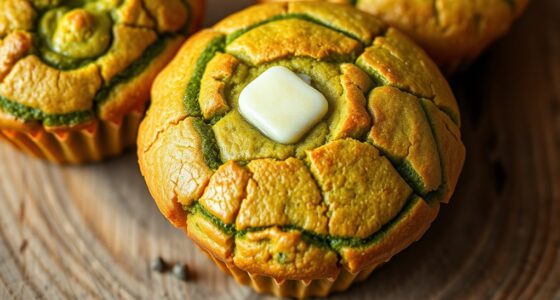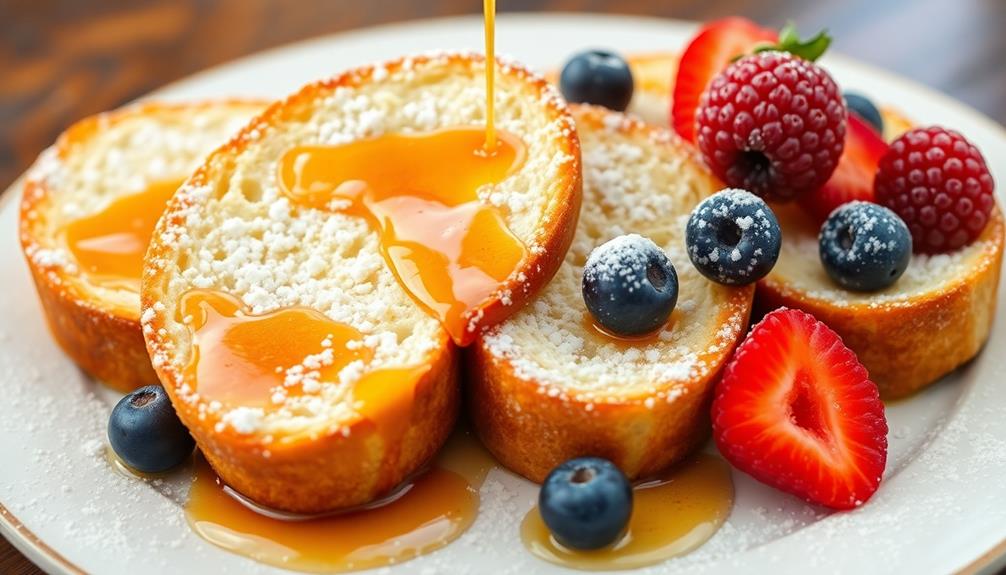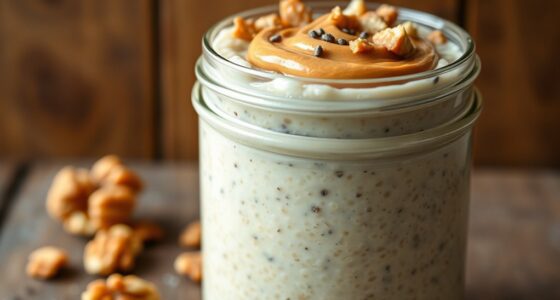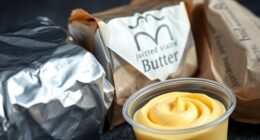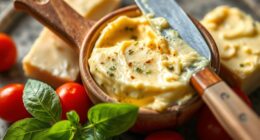Elevate your mornings with these delectable breakfast butter recipes! Explore the rich history of butter from ancient civilizations to today's artisanal makers. Discover a simple recipe featuring honey, vanilla, and cinnamon for a creamy, subtly sweet spread. Customize the flavors by adding spices, nuts, or dried fruits. These versatile butters pair perfectly with toast, pancakes, and more, transforming your breakfast into an unforgettable experience. Chilling the butter helps meld the flavors, creating a spreadable texture. Dive deeper to uncover endless possibilities for crafting your own signature breakfast butter blends.
Key Takeaways
- Homemade breakfast butters can elevate morning meals with their rich, creamy texture and subtle sweetness.
- Customizable recipes allow for unique flavor combinations, from sweet honey butter to savory herb butter.
- Higher fat content butter (80%-82%) enhances the flavor and richness of breakfast spreads.
- Refrigerating the butter for 30 minutes to 1 hour helps achieve a spreadable texture.
- Homemade breakfast butters offer freshness, versatility, and cost-effectiveness compared to store-bought options.
History
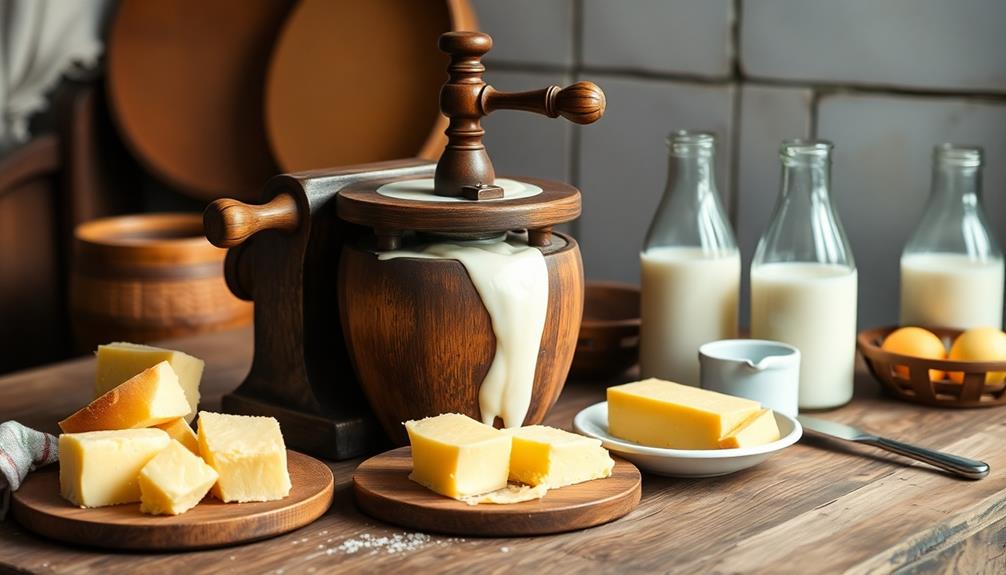
Butters have a long and rich history, dating back centuries to ancient civilizations. From the creamy, golden-hued butters of the Egyptians to the rustic, nutty varieties favored by European peasants, this versatile ingredient has been a breakfast staple for millennia.
In the Middle Ages, monasteries became centers of butter production, experimenting with flavors and techniques that would inspire modern-day butter enthusiasts. Throughout history, the production of butter has evolved, with innovations like pasteurization techniques enhancing safety and shelf life, making it a staple in households worldwide.
As global trade expanded, butter recipes traveled the world, blending cultural influences and creating unique regional specialties. The industrial revolution brought mass production and the rise of commercial butter brands, making this once-exclusive delight accessible to all.
Today, artisanal butter makers celebrate the art of crafting exceptional butters, rediscovering heirloom varieties and infusing them with innovative flavors. Butter's enduring popularity is a testament to its versatility, flavor, and the cherished memories it evokes of leisurely mornings and comforting meals.
Recipe
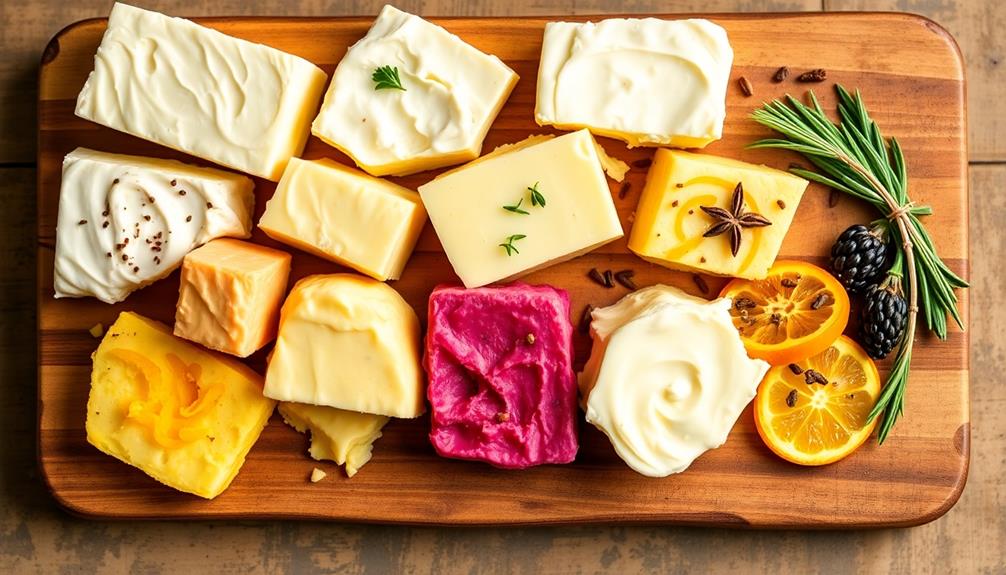
Breakfast butter is a versatile and delicious treat that can elevate any morning meal. Whether you're enjoying it on toast, pancakes, or waffles, the rich, creamy texture and subtle sweetness will delight your taste buds.
By using higher fat content butter, you'll enhance the richness and flavor of your breakfast butter, making it even more delectable. In this recipe, we'll guide you through the process of creating your own homemade breakfast butter, ensuring you can savor the perfect blend of flavors from the comfort of your own kitchen.
Ingredients:
- 1 cup unsalted butter, softened
- 2 tablespoons honey
- 1 teaspoon vanilla extract
- 1/4 teaspoon ground cinnamon
- Pinch of salt
Instructions:
In a medium bowl, combine the softened butter, honey, vanilla extract, cinnamon, and salt.
Using a hand mixer or a sturdy spoon, mix the ingredients together until well incorporated and the butter is light and fluffy.
Scrape the breakfast butter into a clean container, such as a small jar or ramekin. Cover and refrigerate for at least 30 minutes to allow the flavors to meld.
Serve the chilled breakfast butter alongside your favorite morning treats, and enjoy the rich, sweet delight.
Tips:
For a more pronounced honey flavor, use a high-quality, floral-scented honey.
You can also experiment with different spices, such as nutmeg or cardamom, to create unique flavor profiles. Additionally, the breakfast butter can be stored in the refrigerator for up to one week, making it a convenient and delicious option for busy mornings.
Cooking Steps
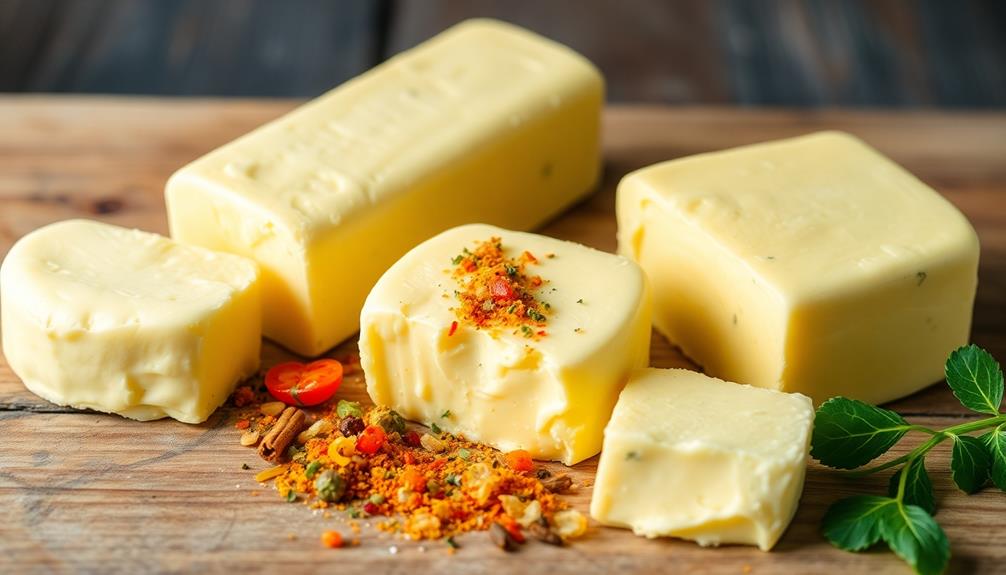
First, gather the necessary ingredients – butter, a mixing bowl, and any desired add-ins.
Then, combine the ingredients until the mixture is smooth and creamy.
Step 1. Gather Necessary Ingredients
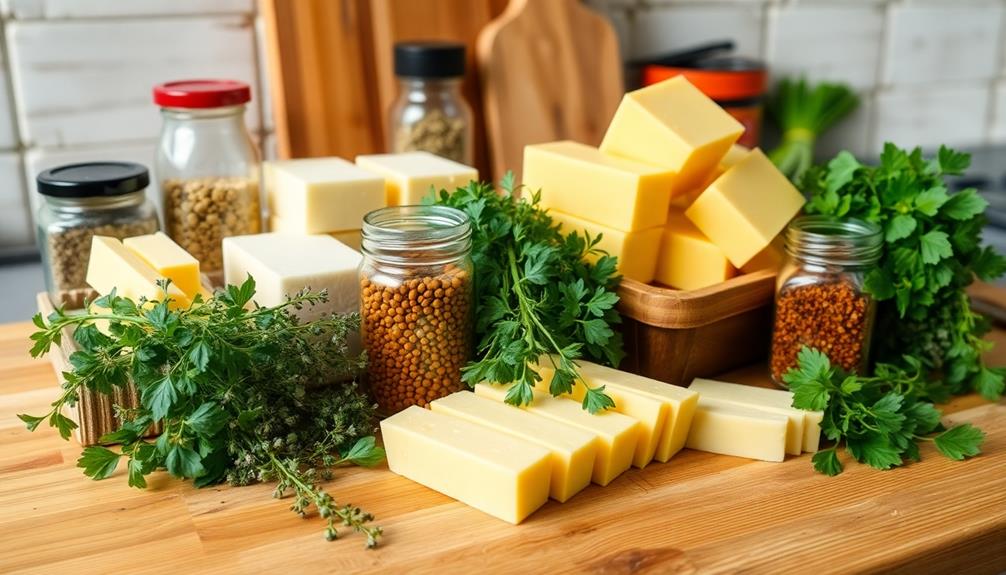
To make any of the delectable breakfast butter recipes, you'll need to gather a few essential ingredients. First, you'll want to have high-quality butter on hand. Look for a rich, creamy butter that's made from the freshest milk, ideally with a fat content ranging from 80% to 82% for optimal texture and flavor.
You'll also need a variety of spices, herbs, and flavorful additions to create your signature blends. Think fragrant cinnamon, zesty citrus zests, and aromatic vanilla. Consider incorporating butter's unique properties to elevate your recipes even further.
Don't forget any mix-ins, like toasted nuts, dried fruit, or honey, to add delightful textures and tastes.
Next, you'll want to make sure you have the right tools for the job. A mixing bowl, a sturdy spoon or spatula, and a clean workspace are all you need to start crafting your homemade breakfast butters.
With your ingredients and equipment ready, you'll be well on your way to whipping up batches of these flavorful spreads that are sure to make your mornings extra special.
Step 2. Combine Ingredients Until Smooth
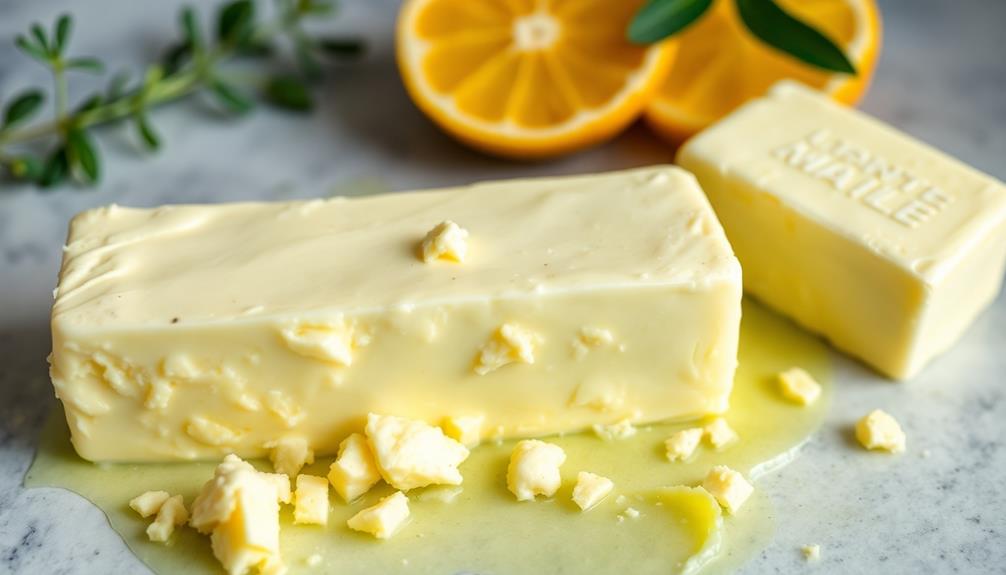
With your ingredients and equipment ready, let's start combining them into smooth, creamy breakfast butters.
First, in a large bowl, add the softened butter, honey, and cinnamon. Using a hand mixer or a sturdy whisk, blend the ingredients together until they're thoroughly incorporated and the mixture has a silky, uniform texture.
Next, for the maple-pecan butter, combine the butter, maple syrup, and chopped pecans. Whip the ingredients until they're evenly distributed and the pecans are finely chopped throughout.
For the berry-infused butter, mash the raspberries or blackberries into the softened butter using a fork. Stir in the vanilla extract and a pinch of salt until the fruit is fully incorporated and the butter is smooth.
Once your preferred butters are prepared, use a rubber spatula to transfer them to small ramekins or jars.
Refrigerate them until ready to serve, then enjoy a dollop on warm toast, muffins, or pancakes for a delightful start to your day.
Step 3. Transfer to Serving Vessel
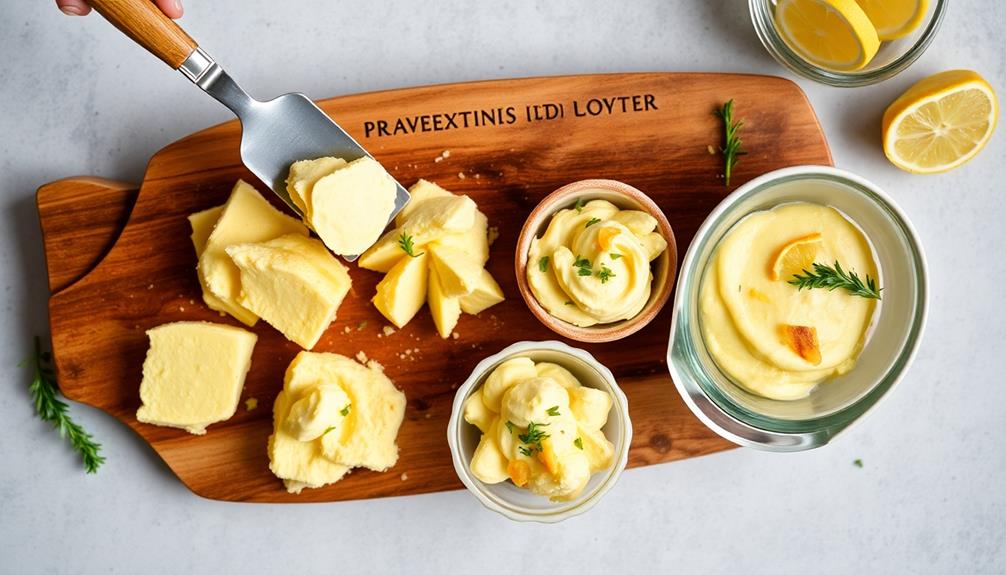
Once your preferred butters are prepared, use a rubber spatula to transfer them to small ramekins or jars. This gentle approach will ensure the butters retain their smooth, creamy texture. Gently scrape the sides of your mixing bowl to collect every last bit, leaving no delicious morsel behind.
Arrange the filled vessels on a serving tray or platter, positioning them in an aesthetically pleasing manner. You might group complementary flavors together or space them out evenly for a visually striking display. Consider adding a small spoon to each ramekin, allowing your guests to easily scoop and spread the flavorful butters.
Now that your breakfast butters are ready to serve, the aroma will surely have your family and friends eagerly anticipating their first taste. Invite everyone to sample the different varieties, encouraging them to try new flavor combinations on their morning toast, biscuits, or pancakes.
These homemade butters are sure to make your breakfast routine extraordinary.
Step 4. Refrigerate Until Firm
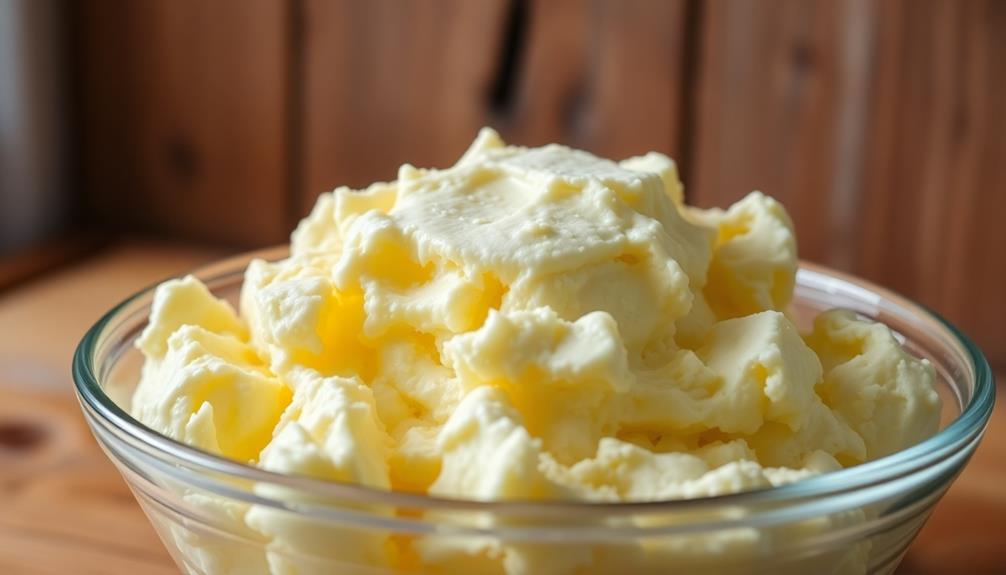
After transferring the prepared butters to your serving vessels, refrigerate them until firm, which should take approximately 30 minutes to 1 hour.
This chilling process helps the butters solidify and develop their delightful, spreadable texture. As the cool air circulates around the containers, you'll notice the vibrant colors and unique patterns on the surface begin to set.
Feel free to gently tap the sides of the dishes to check if the butters have reached the desired firmness. Once they've reached that perfect, chilled consistency, you can remove them from the fridge and serve.
Doesn't that just make your mouth water? These flavorful creations are now ready to be enjoyed on warm, freshly baked breads, muffins, or whatever breakfast delights you have planned.
Get ready for a truly unforgettable morning meal!
Step 5. Serve Chilled With Toast
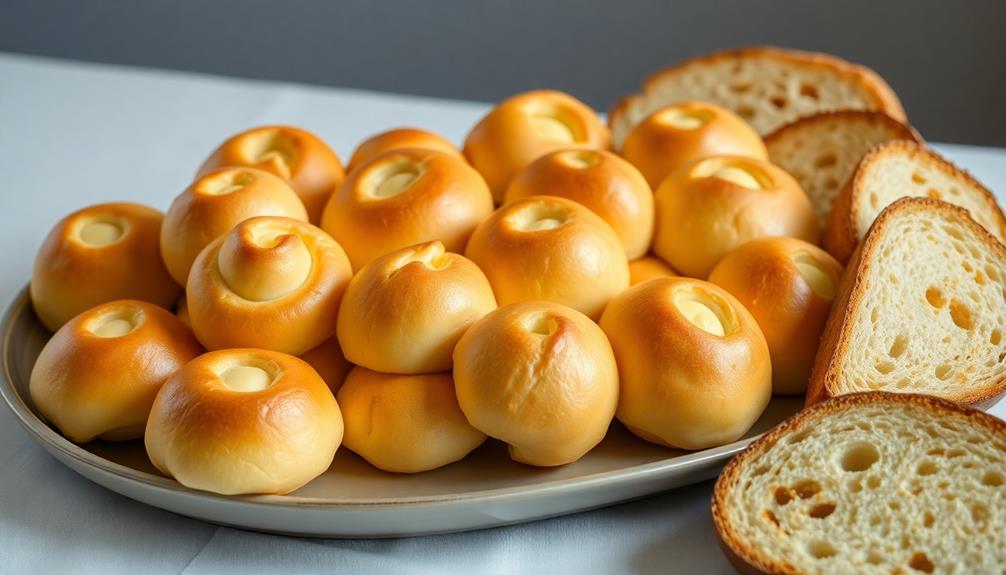
The chilled, flavorful butters are now ready to elevate your breakfast experience. Grab a slice of freshly toasted bread and get ready to indulge. Spread the cool, creamy butter generously across the warm surface, allowing the flavors to melt together harmoniously.
The contrast of the crisp toast and the silky, chilled butter will tantalize your taste buds, making each bite an absolute delight. Savor the burst of flavor as you sink your teeth into the toast, the butter's rich, velvety texture complementing the bread's crunch.
Whether you've chosen the vibrant lemon-herb or the decadent maple-cinnamon variety, the chilled butter will elevate your breakfast to new heights. Pair it with a steaming cup of coffee or tea, and enjoy a moment of pure bliss to start your day.
Final Thoughts
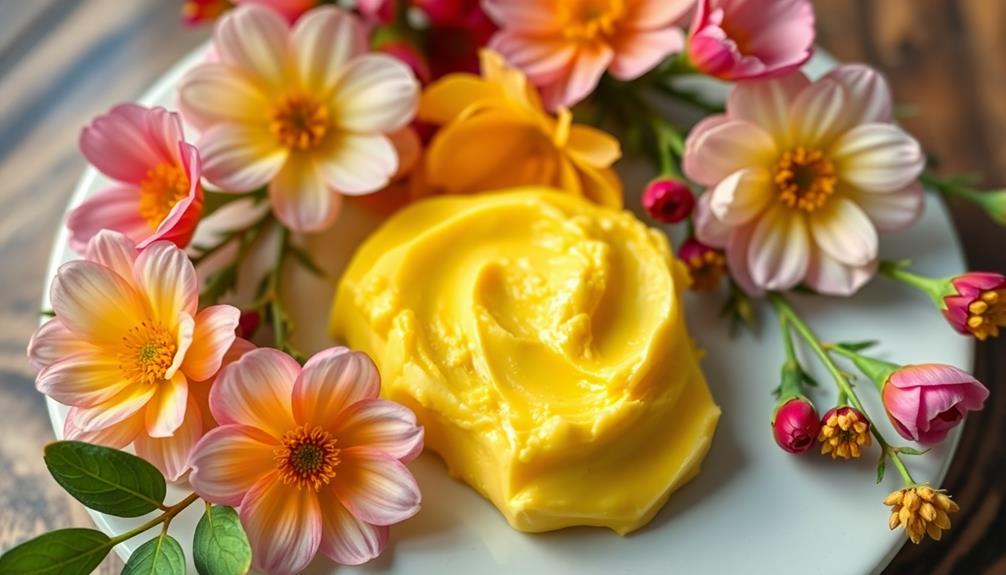
Choosing the right breakfast butter can elevate your morning meal, bringing a delightful flavor profile to your plate. Whether you prefer a sweet and creamy honey butter or a tangy and vibrant herb butter, these homemade spreads are sure to make your toast, pancakes, or waffles even more irresistible.
The beauty of these recipes lies in their versatility – you can whip up a batch on the weekend and enjoy them all week long, or experiment with different flavor combinations to suit your mood.
As you venture into the world of breakfast butters, don't be afraid to get creative. Try mixing in your favorite spices, nuts, or dried fruits to create unique and personalized spreads. The possibilities are endless!
Frequently Asked Questions
How Long Do Homemade Butter Spreads Last in the Refrigerator?
Homemade butter spreads typically last 1-2 weeks in the refrigerator when stored properly. Keep them in an airtight container and they'll stay fresh and flavorful for your morning toast or baking needs.
Can I Use Salted or Unsalted Butter for These Recipes?
You can use either salted or unsalted butter for these recipes. The choice depends on your personal taste preference and how much additional salt you'd like in the final product. Both types of butter will work well in these flavored butter spreads.
Do I Need Any Special Equipment to Make Flavored Butters?
You don't need any special equipment to make flavored butters. A bowl, a fork or whisk, and your favorite mix-ins are all you need to create delicious flavored spreads for your morning toast or bagels.
Can These Butters Be Frozen for Longer Storage?
Yes, you can freeze these flavored butters for longer storage. Simply portion them into airtight containers or wrap them tightly in plastic, then pop them in the freezer. They'll keep for several months when frozen.
Are There Any Health Benefits to Homemade Butter Spreads?
Yes, homemade butter spreads can offer health benefits. They're often free of preservatives and contain beneficial fats. Plus, you can customize the flavors to your liking, making your mornings more enjoyable.
